#wwII history
Explore tagged Tumblr posts
Text
I'm sure all the Bucky stans know this but there are a lot of us who don't so I need to say this and then shout it from the roof tops for the rest of you
During World War 2 in America the enlisted troops serial number started with 12 and the drafted troops started with 32
Bucky's serial number is 32557038 (yes I do know that off by heart)
His number starts with 32...
32.
Our boy was drafted, he didn't enlist and juding by the year he was probably drafted due to the Service and Enlistment Act
But did not choose to go to war, he was forced.
Just let that sink in
Because I cannot get over the fact that James Barnes never wanted to go to war, and Steve Rogers desperately wanted to be fit enough to enlist had swapped places
That parallel is insane
And I cannot believe that Marvel has never adressed the fact that Bucky went through all the shit he did because he was drafted. He didn't go in knowing the risks because he didn't choose to become a soldier, that choice was made for him, and thanks to the choice his life was a living hell since then
#bucky barnes#winter soldier#the winter soldier#james buchanan barnes#james bucky barnes#captain america#enlistment#drafting#world war 2#ww2#wwii history#wwii era#wwii#world war ii#ww2 history#marvel#mcu#marvel comics#james bucky buchanan barnes#serial number#32557038#marvel fact#wayward rambles#wayward rants#i lost my mind when i found this out
98 notes
·
View notes
Text
Grumman TBM Avenger getting serviced by Aviation Ordance Men as they service the .50 caliber machine guns + plane turrets
Circa 1944-45
Source: NationalArchives
Color: Colourised PIECE of JAKE

#military history#worldwar2photos#ww2history#worldwar2history#history#worldwar2#wwii history#aviation#ww2 aviation#ww2 aircraft#ww2 history#ww2 photo#ww2
409 notes
·
View notes
Text
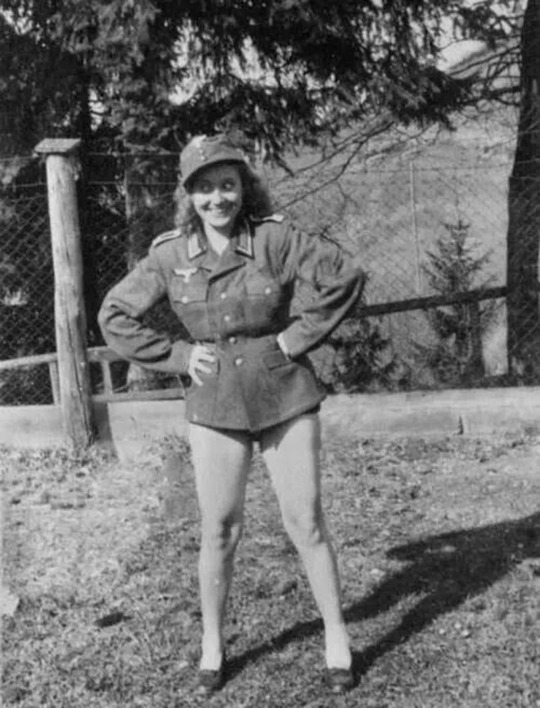
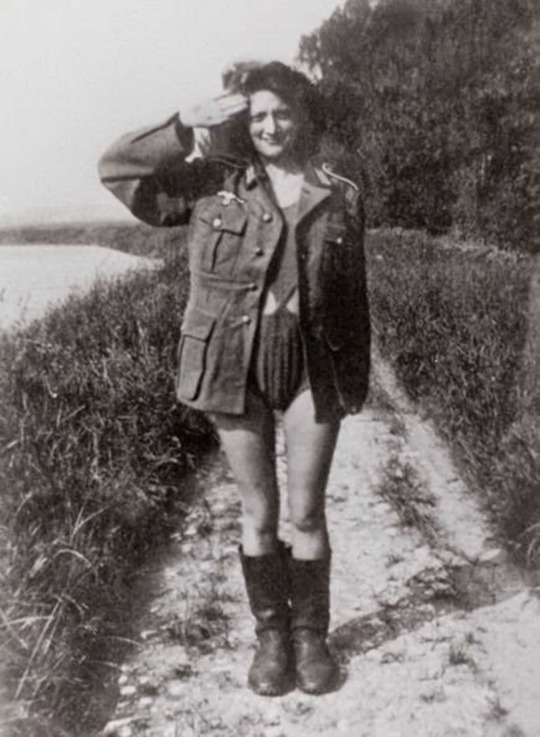
French girls wearing their German boyfriends uniforms during World War 2. The photo on the right was found on a German POW.
#historical photos#history#historical#ww2#world war 2#world war ii#second world war#ww2 photos#wwii#wwii photos#ww2 history#wwii history#1940s#1940s women#1940s photos#ww2 women
896 notes
·
View notes
Text

Operation Torch, North Africa, November 1942, American troops on board a landing craft going in to land at Oran during Operation TORCH.
#ww2#north africa#wwii#world war 2#1940s#second world war#us army#navy#us navy#world war ii#war history#world war two#world war#world#war#2#tumblr#tumbler#photography#photo#photos#africa#ww2 era#Operation Torch#us armed forces#us troops#wwii germany#wwii era#wwii history#history
168 notes
·
View notes
Text

P-61A 42-5580 Wabash Cannon-Ball IV of the 425th Night Fighter Squadron. France, 1944.
➤P-61 VIDEO: https://youtu.be/EjfRv9vi0D0
➤WW2 VIDEOS: https://dronescapes.video/WW2
#P-61#P61#northrop grumman#wwii#youtube#aircraft#airplane#aviation#dronescapes#documentary#military#aviation history#ww2#night fighter#black widow#P61 Black widow#Northrop P61#France#circa 1944#1940s#colorized#wwii history#wwii airplane#wwii era#world war ii#world war 2#military history
170 notes
·
View notes
Text
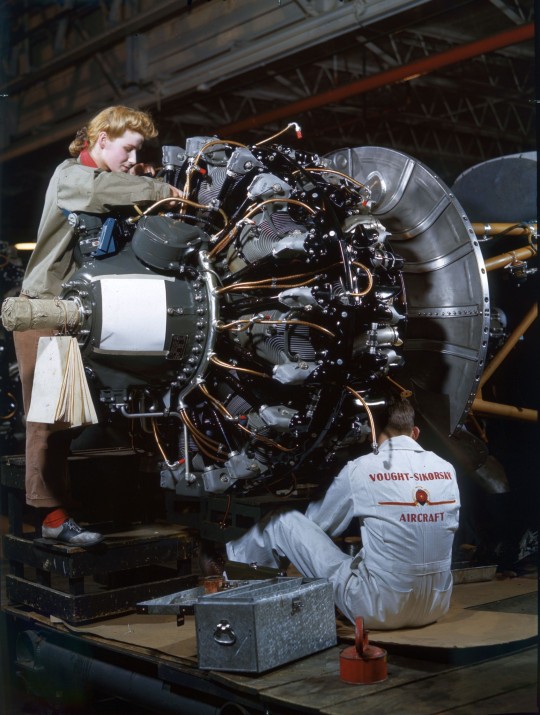
Two workers attaching a Pratt & Whitney R-2800 Double Wasp onto a F4U Corsair at the Chance-Vought factory in Stratford, Connecticut.
Date: March 1943
NARA: 179036630
#Vought F4U Corsair#Vought F4U#F4U Corsair#F4U#Corsair#Fighter#Aircraft#Airplane#United States Navy#U.S. Navy#US Navy#USN#Navy#World War II#World War 2#WWII#WW2#WWII History#History#Military History#Chance-Vought Factory#Factory#Stratford#Connecticut#March#1943#color photo#my post
490 notes
·
View notes
Text
Eugene Roe in Germany, Eugene and Spina hanging out. I’m not sure when these were taken, so if someone knows that would be cool to know!


#band of brothers#eugene roe#ralph spina#doc roe#bofb#hbo war#easy company#wwii#wwii history#baddies if you ask me
237 notes
·
View notes
Text
"We killed Poland, We're bastards"

#art#artists on tumblr#cartoon art#south park#southpark#sp#south park fanart#southpark fanart#sp fanart#south park fandom#southpark fandom#sp fandom#countryhumans#countryhumans art#ussr#countryhumans ussr#3rd reich#countryhumans 3rd reich#kyle broflovski#south park kyle#southpark kyle#sp kyle#eric cartman#south park cartman#southpark cartman#sp cartman#history#wwii history#wwii#south park memes
101 notes
·
View notes
Text
Hi, this is for those who still think comparing Trump to Hitler is hysterical and overly dramatic.
Project 2025, which Trump claims not to be associated with, but on which many close associates of his worked, details a plan to mobilize several forces like the National Guard and local police and sheriffs to "go around the country arresting illegal immigrants in large-scale raids".
The immigrants would then be taken to "large-scale staging grounds near the border, most likely in Texas" to be held in internment camps (a sort of prison for people who haven't been charged with a crime) before deportation.
(I'm citing this almost directly from the Wikipedia page about Project 2025, in the section "Policies" under "Immigration reforms", second to last paragraph.)
In shorter words: Raids to collect immigrants and place them in prison-like camps without a criminal charge. Let's employ a little pattern recognition and see that this is EXCEEDINGLY SIMILAR to the Reichspogromnacht in the night of the 9th November 1938.
In this night, an assassination attempt on a German diplomat in Paris (Ernst vom Rath) by a young polish Jew (Herschel Grynszpan) two days before was used as an excuse to stage a raid on jewish property by the German SA forces. Synagogues were burnt down, jewish property was destroyed and jewish people were detained, abused, raped and killed.
About 26.000 jewish men and teenagers were taken to concentration camps in Buchenwald, Dachau and Sachsenhausen. Many of them died following abuse in these camps, they were forced to give up their property and most were only set free after agreeing to migrate to other countries.
Afterwards, jewish organizations were forcibly disbanded, jewish press was forbidden, jewish people were no longer allowed to pursue trades and crafts, or own businesses. And obviously the discriminatory laws against jewish people only increased further.
(Information taken from the website of the state headquarters for political education Baden-Württemberg. The site is in German.)
TL; DR In both cases, people are forcibly detained without charges and placed in camps to be forced to migrate/ be deported. Are you seeing what I'm seeing??
As a German, do not repeat our mistakes and do not let yourself be radicalized into committing another Holocaust. Yes, it is exactly as bad as we're making it sound and we're being loud about it to prevent another eleven million people being killed systematically by a faschist government and its ignorant people.
#donald trump#trump administration#project 2025#antisemitism#wwii history#you are not immune to propaganda#german history#2024 presidential election#immigrants#immigration#us politics
90 notes
·
View notes
Text

83 years ago, Independence Day was celebrated in somewhat different circumstances.
Street fighting on Independence Day in -34 degree frost in Karhumäki, Eastern Karelia, on December 6, 1941.
A high price has been paid for Finland's independence. We must cherish and protect this heritage that has been left to us. Happy Independence Day! •••••••• 83 vuotta sitten itsenäisyyspäivää vietettiin hieman erilaisemmissa tunnelmissa.
Katutaistelua itsenäisyyspäivänä -34 asteen pakkasessa Itä-Karjalan Karhumäessä, 6.12.1941.
Itsenäisyydestä on maksettu kova hinta. Meidän tulee vaalia ja suojella tätä perintöä, joka meille on jätetty. Hyvää itsenäisyyspäivää! •••••••• [ sa-kuva | 66119 | T.Norjavirta ]
#wwii#worldwar2#colorizing#jhlcolorizing#finland#ww2history#wwii history#ww2photos#colourized#history#ww2 continuationwar#continuationwar#continuation war#jatkosota#second world war#world war 2#war#war history#historia#colourised#colorized
84 notes
·
View notes
Text
[ Starscream (The Movie) fic ]
After seeing the "Bumblebee" movie, I'm toying with the idea of writing an Ao3 "Starscream: the Movie" fic where Starscream gets awoken early (and alone) in 1942 WWII Germany and disguises himself as an Messerschmitt Me 262 (one of the first jet engine planes. Used for combat in 1944, but test flights were happening in 1941). He spends nights scrambling for half-decent fuel while trying to maintain a low profile as he tries figuring out where the rest of the Deceptions are.
Luftwaffe dog-fighters start seeing him as an omen of good luck since he always attacks the RAF bombers, some believing the ghost of the Red Baron is flying (the main body of the plane is red), and begin referring to the empty plane as "Geist" [Ghost in German]. In truth Starscream's stripping RAF bombers fuel tanks mid-air under cover of darkness because it's the easiest way to get a ton of fuel while leaving behind little to no trace of what he actually is. He picks a German plane because at the time the [$-Villains of WWII-$] were winning so he just picks the winning side, he doesn't know or care about the details (i mean, it ain't HIS war).
That would be the initial setup anyway...
I mean, just imagine this plane in Starscream colors. TELL ME that wouldn't be a cool concept.





EDIT: I just found this epic recording of the plane in action along with the recording of the guy being stunned. Just thought I'd add it here.
youtube
And here's a clip from the movie "Red Tails" (2012) that shows just how their superior speed made these things a nightmare.
Just imagine Starscream pullin' up on a fleet of bombers in this form and doing his thing.
youtube
2ND EDIT:
So apparently there exists a Bay-verse Starscream figure that transforms into the Red Baron plane from WWI and I'm just scratching my head wondering how Micheal Bay managed to bungle a premise THIS good.
(Tbf, I can't really see Starscream as a propeller aircraft, he's supposed to be the fastest flyer so he should naturally have jets).
youtube
3rd EDIT:
Welp...guess it was only a matter of time before my pathetic aft posted this brainrot of mine:
Starscream (The Movie)
#transformers#starscream#tf g1#autobots#transformers g1#starscream transformers#starscream g1#bumblebee movie#bumblebee#decepticon#decepticons#Youtube#red baron#wwii planes#wwii era#wwii#world war ii#world war 2#ww2#world war two#ww2 history#wwii history#Messerschmitt Me 262#jets#michael bay
77 notes
·
View notes
Text

World War II Axis helmets (not all of them obviously)
76 notes
·
View notes
Text
D-Day was 80 years ago today!
D-Day was the first day of Operation Overlord, the Allied attack on German-occupied Western Europe, which began on the beaches of Normandy, France, on 6 June 1944. Primarily US, British, and Canadian troops, with naval and air support, attacked five beaches, landing some 135,000 men in a day widely considered to have changed history.
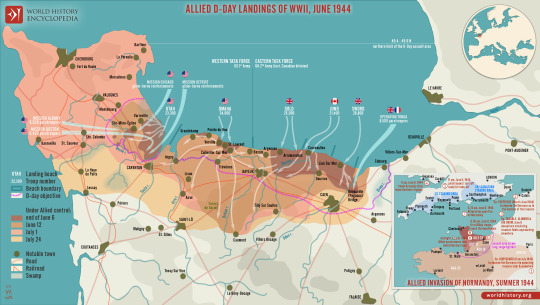
Where to Attack?
Operation Overlord, which sought to attack occupied Europe starting with an amphibious landing in northwest France, Belgium, or the Netherlands, had been in the planning since January 1943 when Allied leaders agreed to the build-up of British and US troops in Britain. The Allies were unsure where exactly to land, but the requirements were simple: as short a sea crossing as possible and within range of Allied fighter cover. A third requirement was to have a major port nearby, which could be captured and used to land further troops and equipment. The best fit seemed to be Normandy with its flat beaches and port of Cherbourg.
The Atlantic Wall
The leader of Nazi Germany, Adolf Hitler (1889-1945), called his western line of defences the Atlantic Wall. It had gaps but presented an impressive string of fortifications along the coast from Spain to the Netherlands. Construction of gun batteries, bunker networks, and observation posts began as early as 1942.
Many of the German divisions were not crack troops but inexperienced soldiers, who were spending more time building defences than in vital military training. There was a woeful lack of materials for Hitler's dream of the Atlantic Wall, really something of a Swiss cheese, with some strong areas, but many holes. The German army was not provided with sufficient mines, explosives, concrete, or labourers to better protect the coastline. At least one-third of gun positions still had no casement protection. Many installations were not bomb-proof. Another serious weakness was naval and air support. The navy had a mere 4 destroyers available and 39 E-boats while the Luftwaffe's (German Air Force's) contribution was equally paltry with only 319 planes operating in the skies when the invasion took place (rising to 1,000) in the second week.
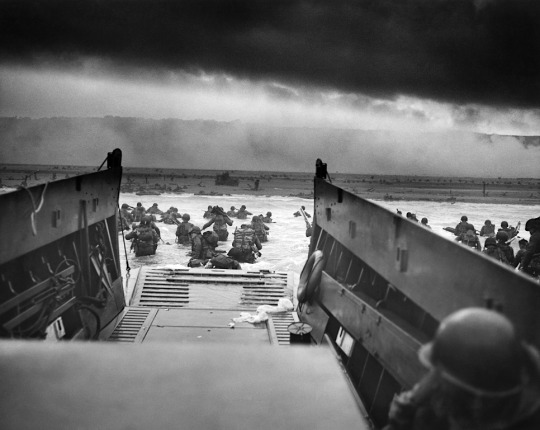
Neptune to Normandy
Preparation for Overlord occurred right through April and May of 1940 when the Royal Air Force (RAF) and United States Air Force (USAAF) relentlessly bombed communications and transportation systems in France as well as coastal defences, airfields, industrial targets, and military installations. In total, over 200,000 missions were conducted to weaken as much as possible the Nazi defences ready for the infantry troops about to be involved in the largest troop movement in history. The French Resistance also played their part in preparing the way by blowing up train lines and communication systems that would ensure the defenders could not effectively respond to the invasion.
The Allied fleet of 7,000 vessels of all kinds departed from English south-coast ports such as Falmouth, Plymouth, Poole, Portsmouth, Newhaven, and Harwich. In an operation code-named Neptune, the ships gathered off Portsmouth in a zone called 'Piccadilly Circus' after the busy London road junction, and then made their way to Normandy and the assault areas. At the same time, gliders and planes flew to the Cherbourg peninsula in the west and Ouistreham on the eastern edge of the planned landing. Paratroopers of the 82nd and 101st US Airborne Division attacked in the west to try and cut off Cherbourg. At the eastern extremity of the operation, paratroopers of the 6th British Airborne Division aimed to secure Pegasus Bridge over the Caen Canal. Other tasks of the paratrooper and glider units were to destroy bridges to impede the enemy, hold others necessary for the invasion to progress, destroy gun emplacements, secure the beach exits, and protect the invasion's flanks.
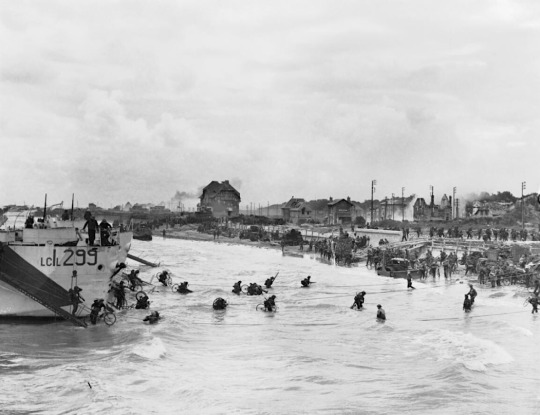
The Beaches
The amphibious attack was set for dawn on 5 June, daylight being a requirement for the necessary air and naval support. Bad weather led to a postponement of 24 hours. Shortly after midnight, the first waves of 23,000 British and American paratroopers landed in France. US paratroopers who dropped near Ste-Mère-Église ensured this was the first French town to be liberated. From 3.00 a.m., air and naval bombardment of the Normandy coast began, letting up just 15 minutes before the first infantry troops landed on the beaches at 6.30 a.m.
The beaches selected for the landings were divided into zones, each given a code name. US troops attacked two, the British army another two, and the Canadian force the fifth. These beaches and the troops assigned to them were (west to east):
Utah Beach - 4th US Infantry Division, 7th US Corps (1st US Army commanded by Lieutenant General Omar N. Bradley)
Omaha Beach - 1st US Infantry Division, 5th US Corps (1st US Army)
Gold Beach - 50th British Infantry Division, 30th British Corps (2nd British Army commanded by Lieutenant-General Miles C. Dempsey)
Juno Beach - 3rd Canadian Infantry Division (2nd British Army)
Sword Beach - 3rd British Infantry Division, 1st British Corps (2nd British Army)
In addition, the 2nd US Rangers were to attack the well-defended Pointe du Hoc between Utah and Omaha (although it turned out the guns had never been installed there), while Royal Marine Commando units attacked targets on Gold, Juno, and Sword.
The RAF and USAAF continued to protect the invasion fleet and ensure any enemy ground-based counterattack faced air attack. As the Allies could put in the air 12,000 aircraft at this stage, the Luftwaffe's aerial fightback was pitifully inadequate. On D-Day alone, the Allied air forces flew 15,000 sorties compared to the Luftwaffe's 100. Not one single Allied aircraft was lost to enemy fire on D-Day.
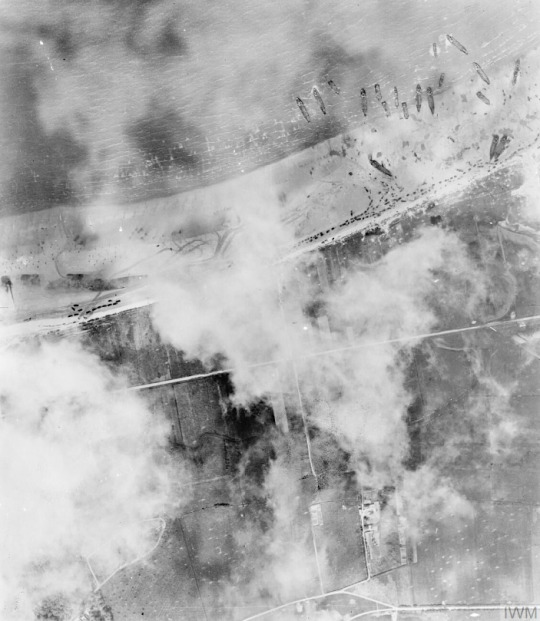
Packing Normandy
By the end of D-Day, 135,000 men had been landed and relatively few casualties were sustained – some 5,000 men. There were some serious cock-ups, notably the hopeless dispersal of the paratroopers (only 4% of the US 101st Air Division were dropped at the intended target zone), but, if anything, this caused even more confusion amongst the German commanders on the ground as it seemed the Allies were attacking everywhere. The defenders, overcoming the initial handicap that many area commanders were at a strategy conference in Rennes, did eventually organise themselves into a counterattack, deploying their reserves and pulling in troops from other parts of France. This is when French resistance and aerial bombing became crucial, seriously hampering the German army's effort to reinforce the coastal areas of Normandy. The German field commanders wanted to withdraw, regroup and attack in force, but, on 11 June, Hitler ordered there be no retreat.
All of the original invasion beaches were linked as the Allies pushed inland. To aid thousands more troops following up the initial attack, two artificial floating harbours were built. Code-named Mulberries, these were located off Omaha and Gold beaches and were built from 200 prefabricated units. A storm hit on 20 June, destroying the Mulberry Harbour off Omaha, but the one at Gold was still serviceable, allowing some 11,000 tons of material to be landed every 24 hours. The other problem for the Allies was how to supply thousands of vehicles with the fuel they needed. The short-term solution, code-named Tombola, was to have tanker ships pump fuel to storage tanks on shore, using buoyed pipelines. The longer-term solution was code-named Pluto (Pipeline Under the Ocean), a pipeline under the Channel to Cherbourg through which fuel could be pumped. Cherbourg was taken on 27 June and was used to ship in more troops and supplies, although the defenders had sunk ships to block the harbour and these took some six weeks to fully clear.
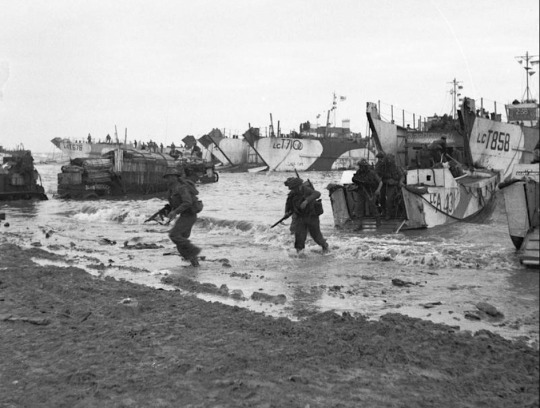
Operation Neptune officially ended on 30 June. Around 850,000 men, 148,800 vehicles, and 570,000 tons of stores and equipment had been landed since D-Day. The next phase of Overlord was to push the occupiers out of Normandy. The defenders were not only having logistical problems but also command issues as Hitler replaced Rundstedt with Field Marshal Günther von Kluge (1882-1944) and formally warned Rommel not to be defeatist.
Aftermath: The Normandy Campaign
By early July, the Allies, having not got further south than around 20 miles (32 km) from the coast, were behind schedule. Poor weather was limiting the role of aircraft in the advance. The German forces were using the countryside well to slow the Allied advance – countless small fields enclosed with trees and hedgerows which limited visibility and made tanks vulnerable to ambush. Caen was staunchly defended and required Allied bombers to obliterate the city on 7 July. The German troops withdrew but still held one-half of the city. The Allies lost around 500 tanks trying to take Caen, vital to any push further south. The advance to Avranches was equally tortuous, and 40,000 men were lost in two weeks of heavy fighting. By the end of July, the Allies had taken Caen, Avranches, and the vital bridge at Pontaubault. From 1 August, Patton and the US Third Army were punching south at the western side of the offensive, and the Brittany ports of St. Malo, Brest, and Lorient were taken.

German forces counterattacked to try and retake Avranches, but Allied air power was decisive. Through August 1940, the Allies swept southwards to the Loire River from St. Nazaire to Orléans. On 15 August, a major landing took place on the southwest coast of France (French Riviera landings) and Marseille was captured on 28 August. In northern France, the Allies captured enough territory, ports, and airfields for a massive increase in material support. On 25 August, Paris was liberated. By mid-September, the Allied troops in the north and south of France had linked up and the campaign front expanded eastwards pushing on to the borders of Germany. There would be setbacks like Operation Market Garden of September and a brief fightback at the Battle of the Bulge in December 1944, but the direction of the war and ultimate Allied victory was now a question of not if but when.
138 notes
·
View notes
Text

Gls advance beneath railroad underpass east of Vellerdingen as fighting continues in France, December 5, 1944.
#ww2#us troops#france#wwii#second world war#world war 2#1940s#world war two#world war ii#war history#us army#ww2 history#wwii era#ww2 era#photography#tumbler#us marines#usaf#war#second#world#wwii history#history
406 notes
·
View notes
Text

A Siberian Huskie trained to carry machine guns at the Chinook Kennels in case of a Japanese attack. Wonalancet, New Hampshire. 1942.
#Huskie#dog#training#ww2 in color#ww2#wwii era#circa 1942#colorized#wwii history#ww2 history#new hampshire#Wonalancet#dronescapes#military#wwii
266 notes
·
View notes
Text


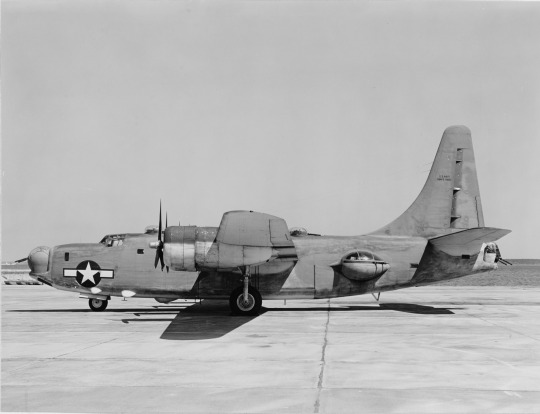

Convair PB4Y-2 Privateer (BU. no. 59351) parked at the Naval Air Station Patuxent River, Maryland.
Photographed on July 11, 1944.
U.S. Naval History and Heritage Command: NH 87982, NH 87983, NH 87984, NH 87985
#Consolidated PB4Y-2 Privateer#Consolidated PB4Y-2#PB4Y-2 Privateer#PB4Y-2#Privateer#Patrol Bomber#Bomber#United States Navy#U.S. Navy#US Navy#USN#Navy#World War II#World War 2#WWII#WW2#WWII History#History#Military History#Naval Air Station Patuxent River#Maryland#July#1943#my post
190 notes
·
View notes